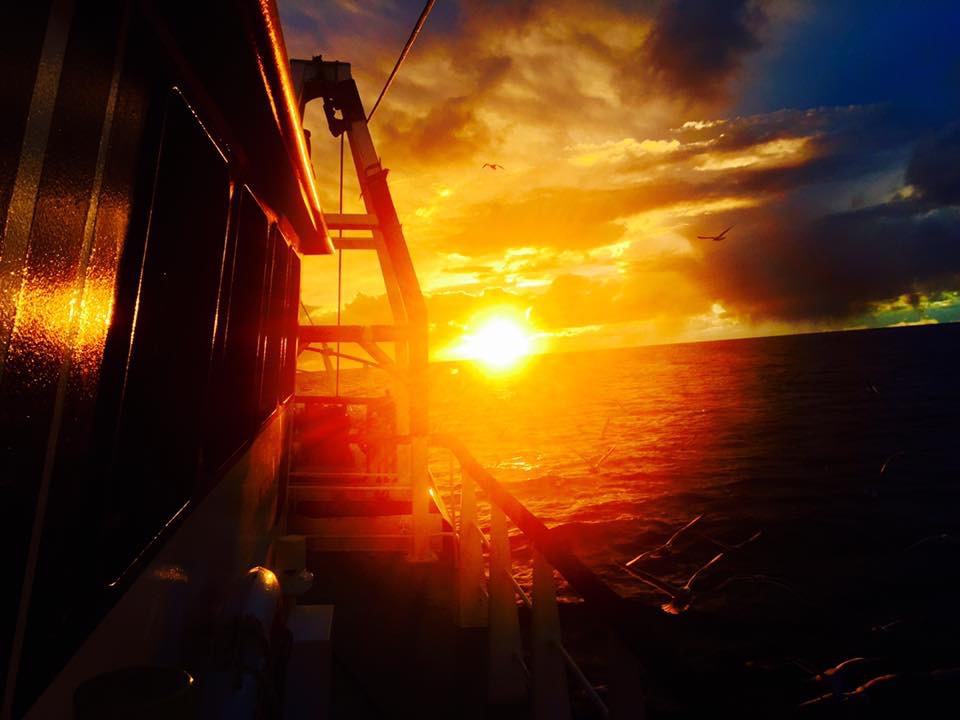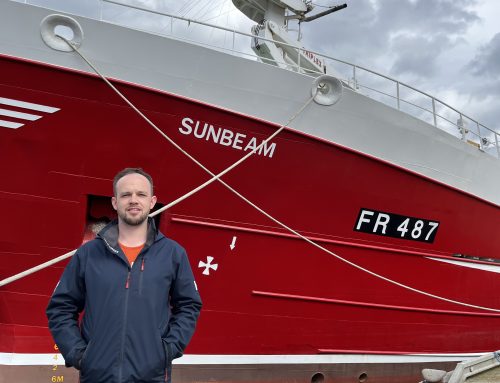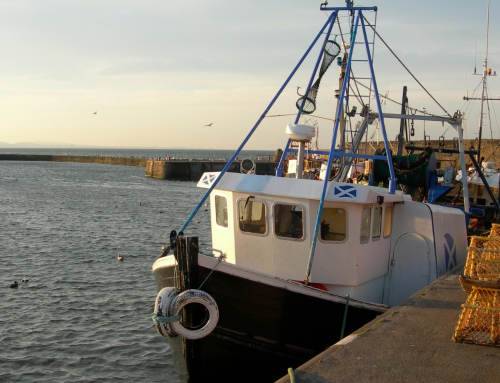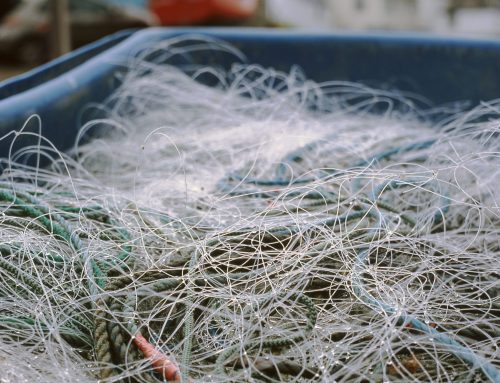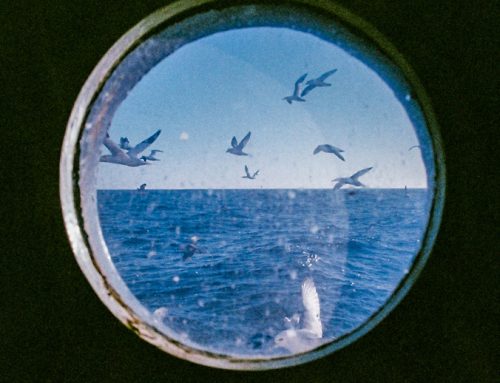The seafood industry is host to a myriad of diverse career pathways, but they don’t always involve working on the water, or directly with fish! FIS is always looking for ways to encourage a new way of ‘working’ in the industry; helping qualified people with an interest in fisheries find opportunities to use their skill set to find a career in the industry.
We chatted with Kim Burke, a recent Scottish graduate and designer, about how she found herself working in an industry she loved as a child. Kim talks about the benefits of collaboration between graphic design and the fishing industry, and what a younger, creative generation can bring to the world of fisheries.
__
We began by asking Kim about her journey, her passion for the fishing industry, and how growing up in a small fishing village on the west coast of Scotland ignited this passion. Kim touches on her childhood spent fishing for bait (mackerel) and creel fishing with her dad for lobster, prawns and crab, and their family favourite ‘lobster dance’ when their catch was successful. Kim took her enthusiasm for fishing right through to her final year of BSc. Product Design, where she developed ‘See Buoy’, a device that uses wave technology to emit a high-frequency light to ensure fishing equipment is visible at sea. Her project balanced both the protection of fishermen’s livelihoods and environmental protection, and Kim cites many names in the fisheries world who inspired her and supported her in the development of See Buoy, including FIS Executive Director Kara Brydson, who helped her begin her journey in the design and fishery innovation sector.
“For me, all of my research emphasised the scale of the issues [facing the industry] but also the scale of effort and powerful actions being taken to make a change… And I wanted to join!”
How can the fisheries and design industries intersect?
Kim tells us it’s essential to truly understand the fishing industry before being able to design effectively. “Fishing is very complex, and you need to go out there and get first-hand experience to design meaningful, effective responses which benefit the industry”. Through her work she has come across many creative, effective examples of how the fishing and design industries have collaborated, including bycatch innovation with Safety Net Technologies, recycling and repurposing fishing nets with Econyl, and putting eyes in fishermen’s nets to minimise bycatch with Smart Catch. Kim has drawn on them all for inspiration, alongside talking to people working in the industry across Scotland.
Design can play many vital roles in fisheries, not just designing innovative products which are more efficient, sustainable, or cost effective. Design can also involve creating eye-catching materials which raise awareness of key fishing issues, breaking down complex information into understandable chunks, or designing websites that build long-lasting stakeholder engagement.
“It’s important to be unique and true to yourself as a designer. By following passion and not the ‘traditional ‘/expected corporate design agency path, designers can branch into new sectors, and bring new perspectives, ideas, or materials. Young people in general also bring a passion and a new way of thinking, which can help find new ways to tackle issues surrounding sustainable fishing practices in the industry.”
What does the future look like?
Kim now works with Mindfully Wired Communications, a creative agency specifically tailored towards fisheries and the marine environment. Kim wants to “continue learning what’s out there and gain a deep understanding of the industry as a whole,” she hopes that it will lead to a future in fisheries innovation design. She advises everyone to follow their hearts, not their expected career routes, and branch out into new sectors.
The fishing industry is stronger, more adaptable, and more innovative when it collaborates with industries outside its sector, going beyond the business norm. FIS is proud to be a champion of diverse and innovative projects and will continue to advocate the benefits of multidisciplinary projects and people, to build a more sustainable and prosperous fishing industry.

